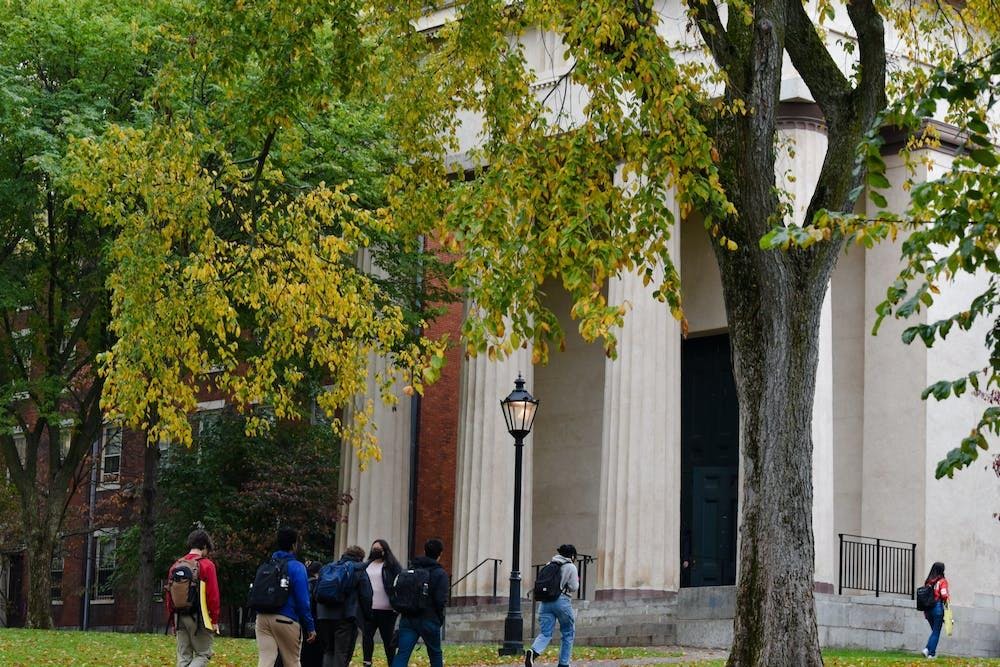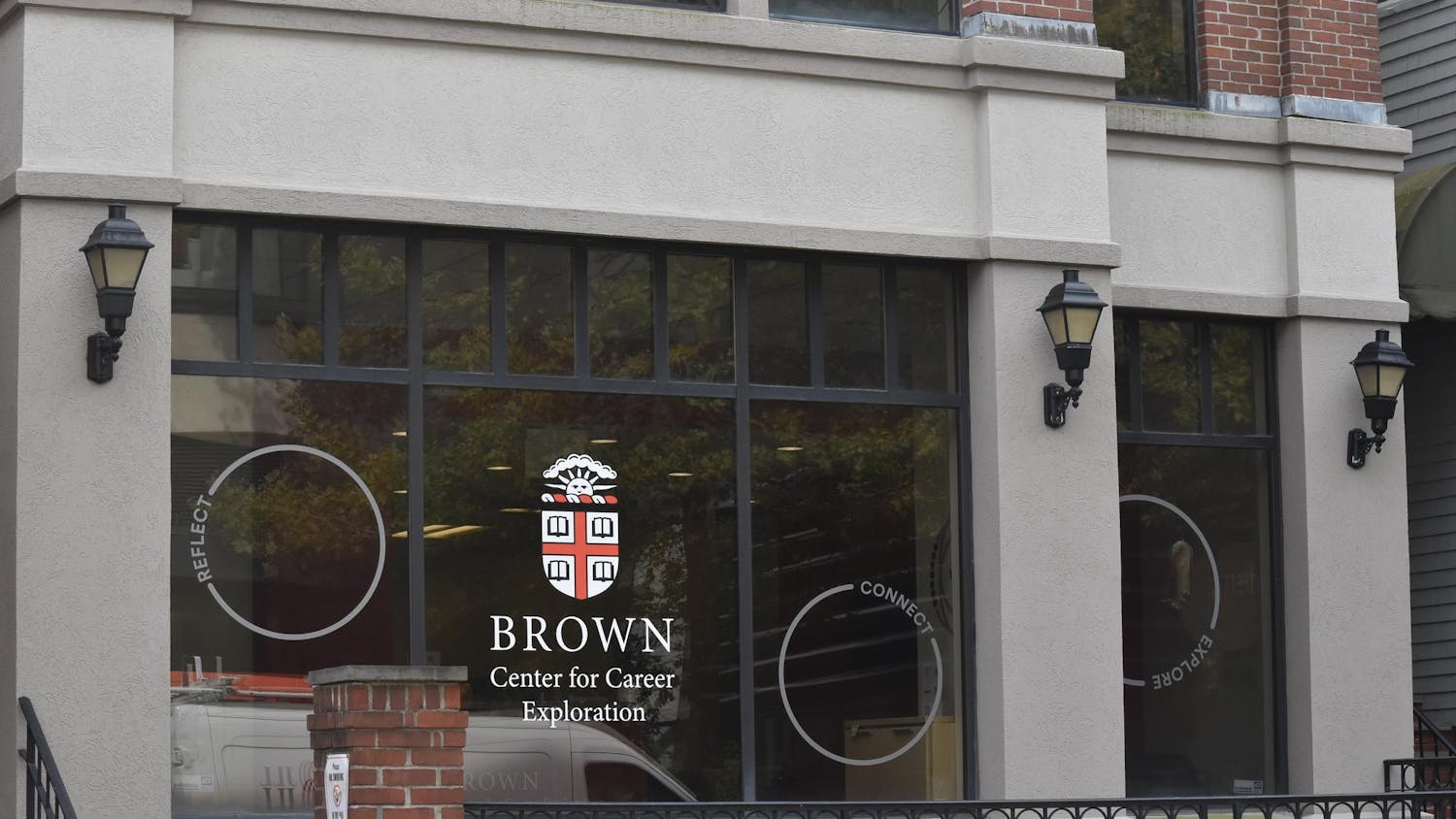At the Joukowsky Institute for Archaeology and the Ancient World, the focus has historically been on the Mediterranean, with a smaller focus on the Americas. In recent years, the institute’s scope has expanded to include Indigenous archaeologies, with contributions from students and professors alike.
Annabel Richards ’26, a Cherokee citizen double concentrating in Archaeology and Critical Native American and Indigenous Studies, is crafting her own track in Indigenous archaeologies. Affiliated faculty members are also bringing their own work with Indigenous peoples across the Americas to Brown.
“What I want to do is to bring an Indigenous perspective to the field,” Richards told The Herald. “I love material history. I think it's the most telling aspect of what real people go through. But I want it to reflect on the present and the future instead of putting Native people in the position of the past.”
“I want to focus on Indigenous futurisms while also taking care of preserving our cultural heritage,” she added.
Indigenous archaeologies is archaeology with, by and for Indigenous peoples, said Robert Preucel, professor of anthropology and director of the Haffenreffer Museum of Anthropology. Preucel teaches ANTH 1125: “Indigenous Archaeologies,” a course offered in the department every few years.
By centering Indigenous peoples, the field of archaeology is gaining new insights, Preucel said. “Indigenous peoples ask different questions of the archaeological record,” he said. “Those questions can broaden science.”
For the Wajãpi people, with recognized land in the state of Amapa in northern Brazil, archaeology does not stop at shards of pottery in the ground. The archaeological record includes stories from tribal elders, the distribution of plants in an environment and even the colors of the birds in the trees, said Mariana Cabral, visiting scholar of archaeology and the ancient world, in an interview with The Herald.
“The Wajãpi have these stories from the beginning of time when everyone was some kind of people,” said Cabral, who began working alongside the Wajãpi people almost 20 years ago. “There were no animals, everyone was people. So there are bird people, there are fish people, there are jaguar people.”
“The Wajãpi tell us that in the beginning of time, people went to this first party and painted their bodies with different colors,” Cabral said. “After the party, they actually then became the birds the way we see them today. As they become birds, their feathers carry the colors they once painted on their bodies.”
This means considering the color of birds as an “archaeological trace” — which has made Cabral rethink what she had learned about archaeology, and also makes the field more inclusive, she said. Creating a dialogue with different knowledge systems is one way of confronting and changing the field’s colonial lens, Cabral said.
“I think Indigenous archaeology is a future in the sense that it makes the field more open and more inclusive, and more ethical, more committed,” she said.
That confrontation also demands acknowledgment in the classroom — teaching “in a way that students are aware of our colonial history (and) the problems that we have, which is (a) Western, white way of thinking (about) the past.”
Still, Cabral noted that acknowledging archaeology’s “violent history” alone isn’t sufficient. Richards, a member of Natives at Brown, said that a “chasm” often appears between academic and activist spaces: While academia can work to confront the harm it has caused, archaeology ultimately traces its roots to colonialism.
“Scholars often have this sense of entitlement to knowledge, an entitlement to everyone’s culture, everyone’s history,” Richards said. "It's hard for scholarly spaces — especially in fields like archaeology, because they're so colonial — to catch up with the activism that's going on.”
Rae Gould, executive director of the University’s Native American and Indigenous Studies Initiative and member of the Nipmuc Nation of Massachusetts, has written about a similar “chasm” existing between archaeologists and the communities they study.
In pedagogical spaces, that can mean using archaeological and museum collections for classes and research without speaking with the people whose heritage is represented, Gould wrote in an email to The Herald.
Richards said that in some classes, she has heard tribes referred to by an incorrect name.
“This practice could be improved by a simple process — although time-consuming — of systemically engaging with the communities connected to these collections to better understand the communities' understandings of them,” Gould wrote. “Institutions should invest in this process, as part of classes being taught, graduate student training and institutional will in general.”
Richards said that by applying what she learns in NAISI classes to her work in archaeology, she believes she can combine her study of the past with a focus on the future.
Part of that future is political. Archaeological sites can play an important role in the fight for Indigenous peoples’ rights to territories.
In Brazil, the archaeological sites Cabral worked on — protected in Brazil by law — were used to help protect the Wajãpi land after conflicts with mining companies. Archaeology became a “tool for negotiation,” Cabral said.
“I do think that archaeology — it is a discipline, it is a science,” Cabral said. “But it is also a political tool for Indigenous people: how to use archaeology to help them through the fight for their rights.”
Indigenous archaeology is a growing field. With an increase in scholars in North America and Oceania, newer movements are popping up across the globe.
Within the last decade, Brazil’s first Indigenous archaeologists earned graduate degrees, and more scholars are on their way, adding Indigenous voices and experiences to a changing field, Cabral said.
On College Hill, the strengthening of Indigenous archaeology goes hand in hand with expanding Indigenous scholarship across campus, Preucel said. Moving forward, Preucel hopes that the University will strengthen and expand NAISI.
“We need more Native faculty on campus (and) they don’t need to be in anthropology or history, they could be in any department,” he said.
“While there are some courses at Brown that offer a focus on Indigenous archaeology, more could be offered that engage Indigenous peoples and projects and their interests and needs,” Gould wrote.
“I hope that more Indigenous people join archaeology efforts,” Richards said. “Our ancestors are so important to us culturally, and our heritage is so important to us… I think it's a really good way to both dissect the history of colonialism and dissect our own histories.”
“History is a very powerful rhetorical device,” she said. “Really taking our history into our own hands — I think that’s what is important.”
Haley Sandlow is a contributing editor covering science and research. She is a junior from Chicago, Illinois studying English and French.





